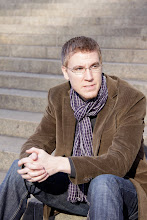Photography comes from our pictoral Western arts heritage, particularly painting, as a means to preserve significant events in our lives. Images in general were created to “conjure up the appearances of something that was absent. Gradually it became evident that an image could outlast what it represented; it showed how something or somebody had once looked.”(1) Art, from this perspective is a historical enterprise.
This basic technology of the new medium was born out of the industrial revolution yet finds roots also in Romanticisms’ ‘quest for the True and Natural.”(2) Modernity’s desire to know pushed photography to record empirical life which had a profound impact upon the imaginations by making the world easily tangible, places come to the individual rather than the spectator to the place. Photography ushered in a more thoroughly Modern mood of realism depicting common existence free from idealism or nostalgia. (3) Yet it is these roots that have often created the divide between it and the rest other artistic mediums. The art academy chose to see its’ mechanical and objective nature, as opposed to the subjective and creative whims of painters, have often been its critiqued points.
When Paul Tillich was asked if photography was an art he replied that “art is only art if it is more than an objective record. Photographers are artists only if they discover the artistic realm or reality through their lenses. This sometimes happens. The combination of eye, soul, and camera occasionally can transform the photographer into an artist” but “photographer does not achieve what a great artist is capable of doing.”
Within the frame, time and place is held captive…but hardly objectively. Rudolf Arnheim stated years ago, “What cinema (and we may apply the following to its predecessor photography as well) is so well equipped to redeem is not ‘physical reality’ but a version of it, namely, the view of boundless, indeterminate, unfathomable world. We recognize this outlook as Romantic – a Romantic image obtained by photographic realism.”(4)
Yet there is a strongly subjective nature to photography. Light and the absence of light is recorded as it reflected or absorbed into material forms. This changes every second. And the photograph does capture a moment in time. Yet there is so much that is subjective. Film itself is subjective…boosting colors or reducing them to shades of black and white. Over and underexposure and any number of photographic techniques distorts the resultant image from its objective reality.
Despite the common advertising claims that a particular camera will make us all into Ansel Adams and Edward Steichen’s, it is the photographer, not the machine, that separates the snapshots from the work of art. Photography, literally means “light writing” or perhaps more accurately “light drawing.”(5) Photographers essential work is with light, angles, focus, and distance to bring about a convincing composition to include what they feel should, and should not, be in the frame. Each photograph that is taken is just one of an infinite number of angles and f-stops. The photographers’ art is centered on careful and creative compositions balanced by the skill of managing the mechanism.
One of the beautiful things about art is the particularity of artistic vision, which in viewing photography we are welcomed into. Photography puts viewers vicariously into that moment via our imaginations. Photography is not meant to be pure historical documentary. To do so would be to deny the expressive quality of the art. Like a bridge, art is an opportunity to enter into and participate in the experience of the artist in time and place. “An image became a record of how X had seen Y.”(6) Images are burned onto the photographers and viewers consciousness and imagination. “The significance of such images lies not simply in their ability to inform, but in their power to stir our emotions.”(7)
I would push beyond the emotional evocation to memory itself. I stated earlier that images have a way of outlasting the event or people. They become tangible memories of that which no longer exists in that state. The arts, and its most accessible form of photography, are intimately connected to memory. Photography does preserve moments: weddings, birthday parties, graduations, and millions of other events are all purposefully recorded for memories sake.
I love how the writer Tim O’Brien writes in “The Things They Carried” about the idea of writing, “The thing about a story is that you dream it as you tell it, hoping that others might then dream along with you, and in this way memory and imagination and language combine to make spirits in the head.”(8) As a photographer I appreciate his desire to connect with the reader, and I with the viewer by commiserating in common experiences or imagined ones.
Just as photography is not so objective nor is our memory. Some things are remembered and others intentionally or unintentionally forgotten. Photography serves as an aid to memory both in precision and against our tendency to forget.
1) Berger, 10.
2) Jenson, 698.
3) Preble, 380.
4) Arnheim, 183.
5) Preble, 153.
6) Berger, 10.
7) Preble, 160.
8) Obrien, 260.







